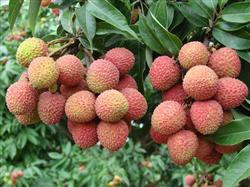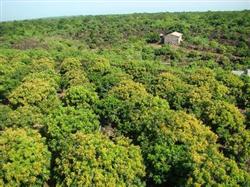High yield and good quality cultivation techniques of Litchi

1. Choose the garden. It is better to select the hilly hillside with open terrain, slope below 30 degrees, loose and fertile soil, deep soil layer, organic matter content above 1%, and water source as litchi plantation. 2. Select seedlings, foot base fertilizer. Choose new root many, branch pole is smooth, without disease and insect healthy branch seedling or graft seedling. When planting, dig planting holes with length, width and depth of 1m, and apply no less than 50kg decomposed organic fertilizer as base fertilizer for each hole. 3. Juvenile management. 1. Apply topdressing frequently and thinly. In order to promote more new shoots, three fertilizers were applied to one shoot in the first year after planting, and two fertilizers were applied to one shoot after the second year. The fertilizer was mainly nitrogen fertilizer, combined with phosphorus and potassium fertilizer. It stimulates 4 - 6 shoots per year. 2. Do a good job of keeping the tip strong. Spraying pesticide twice each time, spraying once respectively when the new buds and tender leaves are unfolded and before the new shoots turn green, and adding proper root fertilizer to the liquid medicine can promote the growth and health of the shoots. 4. Result tree management.① Cultivate healthy fruiting mother shoots. According to the tree vigor to determine the attack once or twice autumn shoots, strong trees to promote the release of two autumn shoots, with the second autumn shoots for the next year's fruiting mother. Before shooting, apply good shoot fertilizer, mainly nitrogen, and put a strong shoot fertilizer, mainly organic compound fertilizer plus potassium fertilizer. Spray pesticide twice for each shoot, and add foliar fertilizer to spray together to protect and strengthen the shoots. 2. Controlling winter shoots to promote flowers. In order to prevent winter shoots from mid-November to December and affect flower bud differentiation, shoot control should be carried out from mid-November: spraying shoot control and killing chemicals; ploughing the soil under the crown, breaking part of the fine roots, reducing the water absorption capacity; cutting or girdling the strong trees spirally, reducing the transmission of organic substances to the roots, increasing the concentration of tree sap, and improving the number and quality of flowers.③ Strengthen flower and fruit protection. In order to improve the fruit setting rate, attention should be paid to: releasing bees at flowering stage; artificial auxiliary pollination; shaking flowers in time to prevent retting flowers in continuous rainy days during flowering period; spraying clean water in the morning and evening in case of dry weather to promote pollination and fertilization; applying fruit-protecting and fruit-strengthening fertilizer at the root for 2~3 times after flowering, applying nitrogen, phosphorus and potassium together, increasing potassium fertilizer amount, and spraying fruit-protecting and fruit-strengthening foliar fertilizer for 3~5 times; strengthening disease and pest control.
- Prev

Conditions of Flower Bud differentiation in Litchi
Litchi fruiting mother branch is strong, the mature period is suitable, the tree potential is moderate, it is easy to control winter shoots, accumulate nutrients, and is conducive to flower bud differentiation. The more organic nutrients accumulated, the better flower bud differentiation. If the tree is too prosperous, vegetative growth is strong, is not conducive to flower bud differentiation, easy to pull out flowers and leaves, resulting in reduced yield or loss of harvest; or smoke.
- Next

Cultivation techniques of Litchi
Cultivation techniques 1. Young litchi tree shaping and pruning young trees mostly adopt the round head shape of the main branch, which is completed within 2-3 days after planting. The growth angle and orientation of branches were adjusted by means of pulling, brace, top, hanging and so on. Pruning and shaping of young trees are carried out simultaneously, and coring, truncation, thinning and sprouting are used before new shoots germinate.
Related
- Moge, come on! The staff of the peasant association in the producing area of cantaloupe were frightened when the crowd gathered.
- Causes and Solutions of low Fruit setting rate of Apple
- Symptoms and control measures of passion fruit virus disease
- Fruit growing lesson: how do apple orchards keep high yields?
- Can you build orchards in the mountains? What are the pros and cons?
- How to manage the coloring period of Crisson grape?
- This paper introduces the processing technology of two kinds of fig products.
- How much is a month for retired teachers in rural areas by 2020?
- How can strawberry planting increase sugar content? We should pay attention to management in many aspects.
- What are the cultivation techniques on how to improve the yield of golden fruit?

